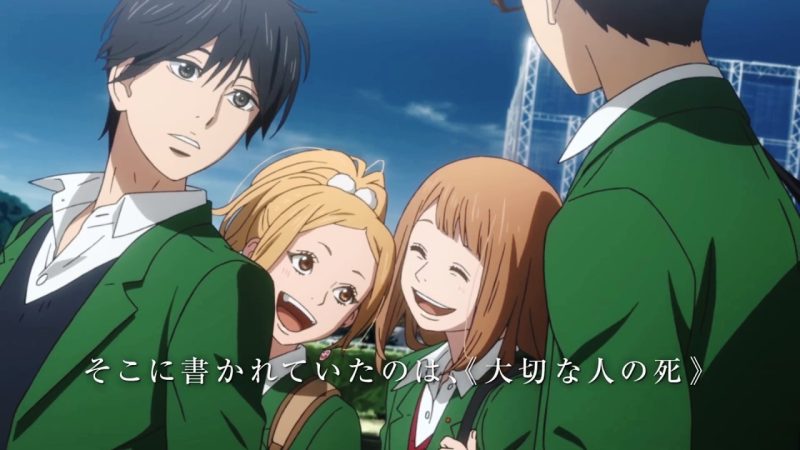Japanese anime movies have evolved from niche entertainment into a global cinematic phenomenon that fascinates audiences worldwide. The stunning visuals, imaginative storytelling, and emotional depth create an exceptional viewing experience.
Drama anime films blend compelling narratives with breathtaking animation to explore human experience in all its complexity. Studio Ghibli’s golden era, the dark classics of the 80s and 90s, and today’s mainstream renaissance show how the best drama anime continues to expand creative possibilities. “Spirited Away” made history as the only non-English language animated film to win the Academy Award for Best Animated Feature.
Japanese animated films have seen a remarkable surge in popularity. Dedicated streaming services like Crunchyroll have grown rapidly, and major platforms such as Netflix and Prime Video have expanded their anime selections. These artistic treasures are more available than ever. Anime films have experienced the biggest boom, with critically acclaimed works leading a new era of excellence in animation.
We’ve gathered what we think are the absolute best drama anime movies from Japan. Our selections come from critical reviews, fan favorites, and expert opinions. These ten films showcase the peak of emotional storytelling in Japanese animation, perfect for longtime fans and newcomers alike who want to explore this rich artistic tradition.
1. Orange: Mirai (2006)
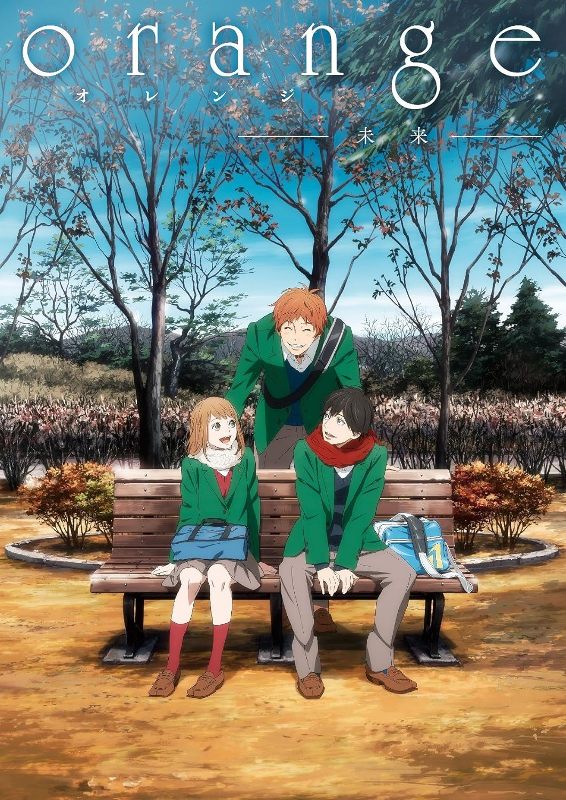
Orange: Mirai stands out as a touching sequel to the emotion-packed Orange series. The film offers a new perspective on a story fans already love. It ran in Japanese cinemas for two weeks from November 18, 2016. Audiences got to explore one of the most unselfish characters in today’s drama anime.
The movie tells the main plot well through Hiroto Suwa’s viewpoint. This brings new layers to the original story and reveals his inner struggles. Plus, it features a new tale by manga creator Ichigo Takano that goes further than both the anime and manga series. Fans at last got the ending they craved.
The main storyline of Orange follows Naho Takamiya, who receives a letter from her future self about a transfer student called Kakeru who is fated to die. Orange: Mirai takes the story in a new direction. It shows us 26-year-old Suwa, who has tied the knot with Naho and has a kid in the future timeline. He and his high school buddies still feel sad about losing Kakeru.
Suwa regrets his role in Kakeru’s fate. He decides to send a letter to his 16-year-old self. His message details the events that led to Kakeru’s suicide, along with his remorse and emotions. He wants his younger self to build “a new future that has not yet been seen” and to support both Naho and Kakeru.
The skilled group behind this moving drama includes director Hirotsugu Hamasaki (known for STEINS; GATE) chief director Naomi Nakayama screenwriter Yuko Kakihara, character designer Nobuhiro Yuuki, and composer Hiroaki Tsutomu. Their collaboration resulted in a film that combines heartfelt storytelling with visual appeal.
The movie reveals the reason behind the series’ title “Orange” – a question fans have pondered since its inception. This disclosure makes the film a must-see for dedicated followers.
Orange: Mirai explores themes of sacrifice, regret, and the desire to alter past events. Young Suwa gets an opportunity to change fate with insights from his future self. His decision to back Naho and Kakeru’s relationship, despite his feelings for Naho, showcases his exceptional character.
Lots of fans say this film is a must-see for anyone who enjoyed the original series. One viewer commented, “without watching it, the Orange series experience feels unfinished”. Opinions differ on how well it succeeds. Some enjoy seeing events from Suwa’s perspective, while others think it has too many recaps. The emotional punch remains powerful either way.
At its core, Orange: Mirai serves as both a complementary piece and a finale to one of Japan’s most moving animated films in recent times. The movie adds depth to the entire Orange experience by offering new viewpoints and continuing the narrative. It earns its spot among Japan’s standout drama anime films.
2. To the Forest of Firefly Lights (2011)
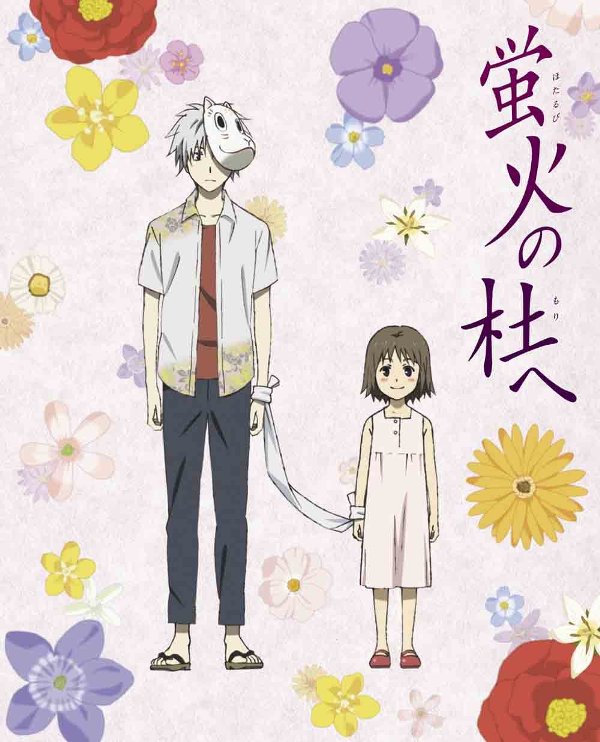
“Hotarubi no Mori e” (known in English as “To the Forest of Firefly Lights”) proves that Japanese animated films can tell powerful stories without needing a full-length runtime – it clocks in at just 44 minutes. The movie hit theaters on September 17, 2011, and went on to build a loyal fanbase that stuck around for months.
This short but touching anime drama brings to life a standalone manga by Yuki Midorikawa from 2002. The tale centers on six-year-old Hotaru Takegawa who gets lost in a forest that locals believe spirits call home. She encounters Gin, a mysterious boy wearing a mask who helps her find her way out. Hotaru attempts to hug him in thanks, but Gin pushes her away and shares a sad truth—he’s a spirit who will disappear for good if a human makes contact with him.
Despite this, Hotaru comes to see Gin every summer, and their friendship grows even though they can’t touch. Hotaru changes from a kid to a high school student while Gin stays young forever. Their connection turns into love, which causes tension between how they feel and the harsh truth that keeps them apart.
The tale ends at a spirit festival in the woods where Gin asks Hotaru to join him. They have fun at the celebration until something awful happens – Gin reaches out without thinking to grab a child who’s about to fall. In his last moments, Gin and Hotaru share their first and final hug as they tell each other they’re in love.
Brain’s Base studio created the anime under Takahiro Omori’s guidance. The show boasts stunning visuals that highlight light and seasonal shifts. The team devoted many hours to finding spots that captured the forest’s spirit drawing ideas from Japan’s Kamishikimi Kumanoimasu Shrine in Kumamoto Prefecture. The staff pushed on despite the 2011 Tohoku earthquake and tsunami hoping their work would soothe viewers.
Piano and violin pieces in the soundtrack add to the emotional weight of Hotaru and Gin’s tale. Ayane Sakura, who voices Hotaru, owned the original manga before landing the part. She said she cried while recording her lines.
The film received the Jury Prize at Scotland Loves Animation festival during its European debut on October 8, 2011. It also won the Animation Film Award at the 66th Annual Mainichi Film Awards. Critics praised the movie’s visual appeal straightforward approach, and heartfelt storytelling drawing parallels to the works of Hayao Miyazaki and Makoto Shinkai.
This movie delves into brief encounters, the journey to adulthood, and poignant love stories. It showcases how Japanese anime can forge strong emotional bonds in a short span. Within the realm of dramatic anime films, this standout work demonstrates that briefer narratives often leave an enduring impression.
3. The Anthem of the Heart (2015)
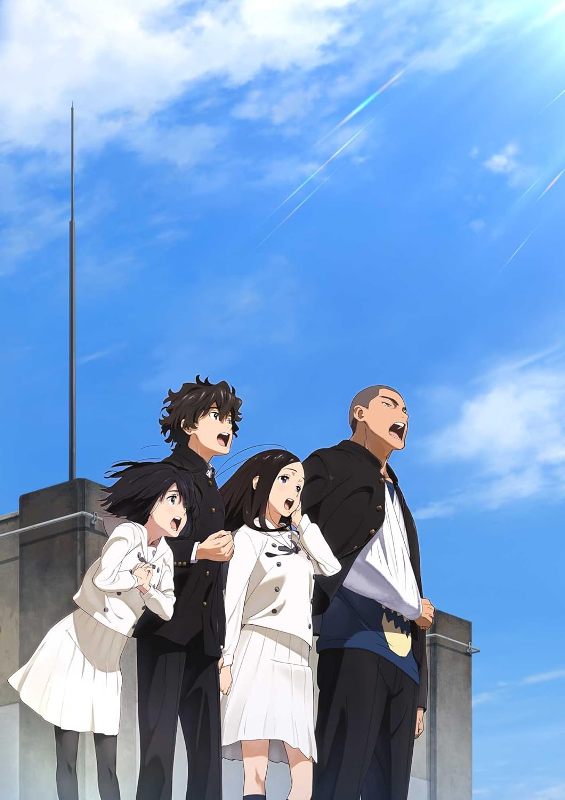
The team that created the popular show “Anohana: The Flower We Saw That Day” gave us The Anthem of the Heart, an engaging 2015 Japanese animated movie about how words shape our lives. Tatsuyuki Nagai directed and Mari Okada wrote this anime drama that blends fantasy, coming-of-age stories, and music.
The plot centers on Jun Naruse, a talkative little girl whose innocent comments break up her parents’ marriage. After this upsetting event, she encounters a magical egg-shaped prince who puts a curse on her. This curse stops her voice to prevent her from hurting others with her words. She experiences severe stomach pain whenever she tries to speak, which results in years of loneliness and worry.
Jun starts high school as a different person – quiet and reserved. She joins her class’s Community Outreach Committee without warning, along with three classmates: Takumi Sakagami (who loves music), Natsuki Nitō (a well-liked cheerleader), and Daiki Tazaki (a former baseball star now injured). These four students need to overcome their communication challenges to create a musical for their school.
This film stands out among drama anime movies because it shows how music can go beyond the limits of spoken words. Jun’s life takes a turn when she hears Takumi playing a made-up tune on his accordion. She figures out that songs might help her say what her voice can’t. This moment kicks off her journey to heal .
A-1 Pictures studio produces gorgeous animation throughout focusing on Jun’s expressions and body language – key elements given her limited speech. The visual style finds a middle ground between Makoto Shinkai’s intricate artistry and Studio Ghibli’s folk-inspired appeal.
The film’s music stands out with classical pieces like Beethoven’s “Pathétique” and the well-known “Over the Rainbow” from The Wizard of Oz. These songs tie in to the film’s themes. “Over the Rainbow” carries extra significance since The Anthem of the Heart includes several subtle nods to that beloved classic.
The film premiered in Japanese cinemas on September 19, 2015, and became a box office success. By November 2015, it had grossed over ¥1 billion (around $8.43 million USD). Critics and audiences alike enjoyed it, with Rotten Tomatoes showing a 63% positive rating and an average score of 7.8/10.
The Anthem of the Heart received multiple accolades, including Best Animated Feature at the 36th Anima Festival. It also received a nomination for Animation of the Year at the 39th Japan Academy Film Prize. Critics described it as “an endearing little film that tells one small story with some real grace”. This recognition helped establish its position among Japan’s top recent drama anime films.
The movie gives us insight into language’s two-sided nature – how words can create and destroy. Jun’s tale and her part in the musical offer a powerful illustration of breaking free and mustering the guts to express our genuine emotions.
4. Clannad (2007)
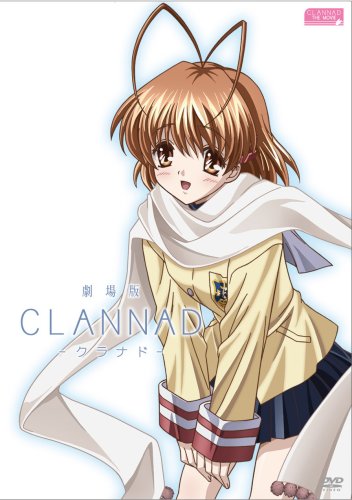
Clannad ranks among the most emotionally touching Japanese animated films. This 94-minute masterpiece delves deep into human connections. Osamu Dezaki directed this cinematic adaptation in 2007, which became his last film before his death in 2011. The story follows Tomoya Okazaki, a disillusioned high school delinquent who sees no meaning or purpose in his life.
The story opens as Tomoya meets Nagisa Furukawa, a frail but eternally optimistic girl who often misses school because she’s ill. Their chance encounter on a cherry blossom-lined hill ended up changing both their lives. Tomoya reluctantly helps Nagisa bring back their school’s drama club to life. This leads him to build meaningful bonds with other students who carry their own emotional baggage.
Clannad sets itself apart from other anime drama movies through masterful visual storytelling. The animation team uses dreamlike techniques—scenes melt into each other, time jumps forward and back, camera angles tilt, and frames fill with glowing sunbeams. These visual elements subtly strengthen the film’s take on isolation, connection, and emotional growth.
The film’s soundtrack raises its emotional power, especially with solo flute themes that mark key moments. The original TV series’ famous “Dango Big Family” song got a controversial update in the film version, which shows the artistic differences between both adaptations.
Clannad looks at family, friendship, grief, and personal growth. A reviewer points out, “The story ends when Nagisa re-establishes the drama club and puts on a play and Tomoya finally asks her out”. But this simple plot hides a deeper look at finding meaning when life gets tough.
The film adaptation drew mixed responses from critics and viewers. Many TV series fans called the movie “rushed” with “accelerated story development”. Others praised the film’s way of creating “a surprisingly moving testimony to friendship, family, and memory”. Most agree that 94 minutes don’t deal very well with capturing the depth and subtlety of the source material, which the TV series later explored fully.
Fans suggest watching the TV series first—specifically Clannad (2007-2008) and then Clannad: After Story (2008)—before the film. This order helps avoid spoilers and gives you the most emotionally rewarding experience of what many call “one of the most emotionally enriching final arcs in any story ever written”.
Clannad stands out among the best drama anime movies because it takes an honest look at human connection and emotional vulnerability. The film might have adaptation limits, but it captures what makes this story strike a chord with audiences—showing how relationships can change even the most negative outlook on life.
5. Colorful (2010)

“Colorful” takes a fresh look at the afterlife and stands out among Japanese animated films. The movie delves into deep themes through its supernatural story. Keiichi Hara directed this 127-minute feature film in 2010, which was based on Eto Mori’s novel. Sunrise produced it while Studio Ascension handled the animation.
A lost soul arrives at death’s train station and gets an unexpected chance. The soul finds itself in the body of 14-year-old Makoto Kobayashi, who took his own life by overdosing on pills. This soul must complete two tasks in six months: find out about its past life’s great sin and learn what pushed Makoto to end his life.
The reborn Makoto finds it hard to bond with his troubled family. His father shows weakness at work, and his mother had an affair with a dance instructor. His older brother Mitsuru has lost faith in him. The story takes a turn when real relationships start to grow, especially when his classmate Saotome accepts him despite his awkward social nature.
“Colorful” excels in its visual storytelling. The film uses a washed-out, dull look that matches Makoto’s depression instead of bright colors that its title might hint at. The colors become richer as his point of view changes.
The movie got major recognition. It won the Excellent Animation of the Year at the 34th Japan Academy Prize, the Animation Film Award at the 65th Mainichi Film Awards, and the Excellence Award at the 14th Japan Media Arts Festival. The film also picked up the Audience Award and Special Distinction prize at the 2011 Annecy International Animated Film Festival.
Critics love how “Colorful” shows real teenage struggles and complex personalities. The title reflects the movie’s message that people aren’t just good or bad but have many emotional layers.
The ending brings a powerful reveal about the soul’s identity and Makoto’s second chance at life. Through Purapura’s guidance, we learn that happiness comes from connecting with friends and family.
“Colorful” made USD 3.90 million in Japan and is now among the best drama anime movies. It shows how Japanese animation can tackle serious issues like suicide, depression, and family problems through an available supernatural lens.
6. Maquia: When the Promised Flower Blooms (2018)
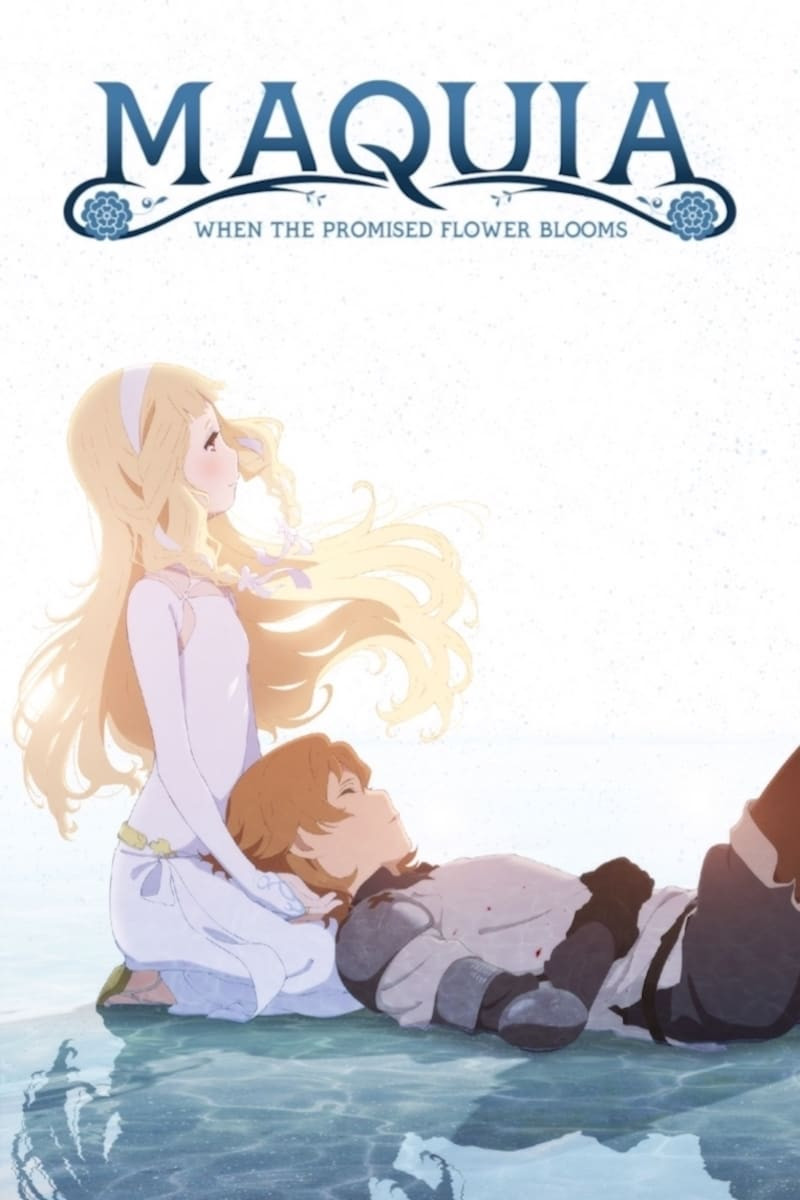
Mari Okada’s directorial debut Maquia: When the Promised Flower Blooms (2018) tells a heart-wrenching story about immortality’s emotional toll through an unusual mother-son bond. P.A. Works produced this Japanese animated film that introduces the Iorph—beings who live for centuries while keeping their teenage appearance.
The peaceful life of the Iorph village shatters when the Mezarte Kingdom launches an invasion to exploit their longevity. Maquia gets separated from her people during the chaos after a berserk dragon-like creature called Renato carries her away. She finds herself lost in a strange forest where she comes across an infant whose mother has died. This moment leads her to make a decision that changes her life—she adopts the baby and names him Ariel.
The story unfolds as a touching exploration of motherhood while Maquia raises Ariel, her appearance frozen in time. Their relationship grows complex through several time periods—from her early days as a new mother to challenging teenage years when Ariel realizes how different they are. The story reaches its emotional heights as Maquia faces an inevitable truth—she will watch her son grow old and die.
The film weaves environmental messages into its core narrative. The Mezarte Kingdom’s exploitation of nature becomes clear through their treatment of the endangered Renato creatures as weapons. On top of that, it shows the devastating effects of unchecked industrial growth on the environment.
The film earned many awards. These include Best Animation at Shanghai’s 21st International Film Festival, the BIFAN Children’s Jury Award at Bucheon’s 22nd International Fantastic Film Festival, and Best Feature Film in the Fantastic Discovery Category at Sitges’ 51st Catalonia International Fantastic Film Festival.
Box office numbers showed global earnings of $4.30 million, with Japan contributing $1.20 million and China $2.50 million. The film reached international audiences through the Glasgow Film Festival and theatrical releases in Australia, the United Kingdom, and North America.
Maquia stands apart from other drama anime movies. Its deep look at maternal love that surpasses physical limits shows that true love means embracing both happiness and inevitable loss.
7. Ushiro no Shoumen Daare (1991)
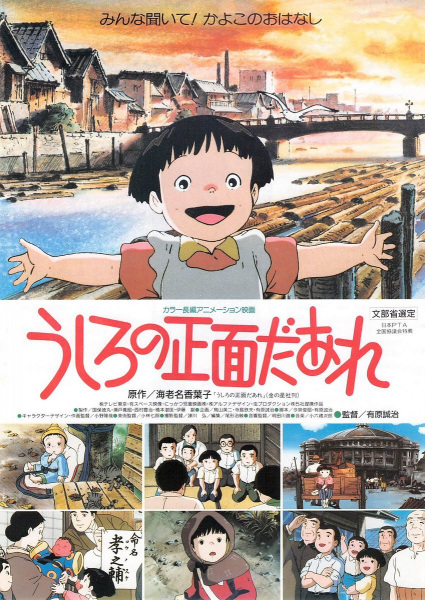
“Ushiro no Shoumen Daare” (1991) stands apart from other Japanese war-themed animations. The film shows conflict at the time through a child’s innocent eyes and focuses on daily life instead of battle scenes. Seiji Arihara directed this 90-minute feature based on Kayoko Ebina’s real-life experiences during World War II in Japan.
The story follows Kayoko, a first-grade student in 1940 who tends to cry easily. She shares her home with her parents, grandmother, and three older brothers. Her mother expects another child. The film lets us see Kayoko’s everyday life as she plays with friends, sings in the schoolyard, and spends time with her brothers.
Japan’s growing patriotic spirit touches everyone, even the children who help with the war effort. Kayoko gives up her favorite doll after she learns its materials could help make military explosives. This moment shows how nationalism spread through the most innocent parts of civilian life.
The film’s name comes from a Japanese nursery rhyme that becomes more meaningful as the story unfolds. Kayoko moves to rural Numazu to live with her aunt – a decision that saves her life. Her brother Kisaburo visits later to tell her about Tokyo’s devastating firebombing, which makes her realize how lucky she was to leave.
The animation style catches your eye with its cartoonish characters set against detailed backgrounds. This artistic choice creates a powerful contrast between childhood innocence and the harsh reality of war. The film earned positive reviews with a 7.7/10 score on MyAnimeList. Critics praised how it captured wartime Japan from a child’s view.
This Japanese animated film shines because it knows when to hold back. The story emphasizes emotional impact rather than showing graphic war scenes. A reviewer said it best: “it’s just a nice albeit sad story about a girl and her family living their lives before the war”. The film shows us how war changes ordinary lives by following Kayoko’s journey through national tragedy.
8. The Tale of Princess Kaguya (2013)
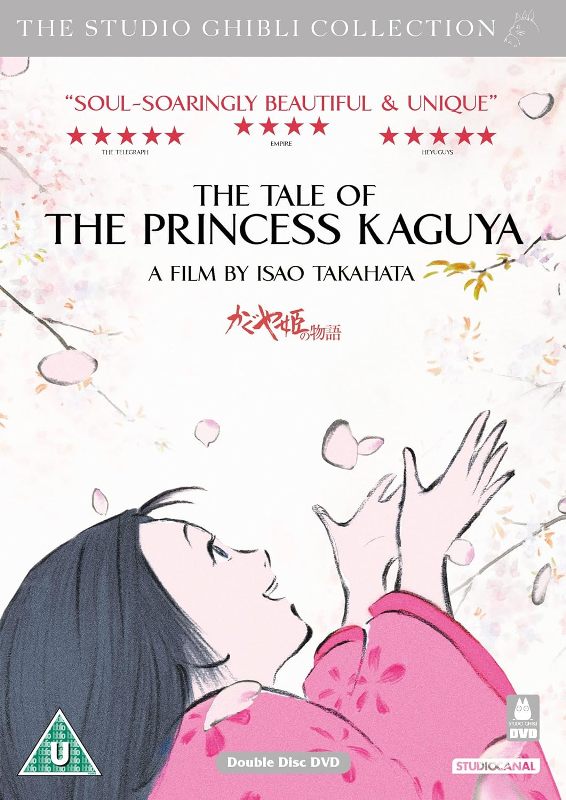
“The Tale of Princess Kaguya” shines as Studio Ghibli’s visual gem. The movie grabs viewers with its beautiful hand-drawn look that echoes old Japanese ink art. This 2013 take on Japan’s oldest folk story “The Tale of the Bamboo Cutter” became the last work of director Isao Takahata before he died in 2018.
The tale centers on a strange baby an old bamboo cutter finds in a glowing bamboo stalk. The child grows quicker than usual into a lovely young woman. Her new parents think she should live among the rich and move her to the city. Kaguya struggles with the strict life forced on her. She longs for real experiences and freedom instead.
Critics praised The Tale of Princess Kaguya for its cutting-edge artistry. The film took over eight years to complete. Takahata wanted a watercolor-inspired look that required meticulous frame-by-frame artwork. This artistic decision resulted in fluid expressive animation where characters’ emotions have an impact on their surroundings. Joyful scenes explode with bright colors, while somber moments cause lines to disappear.
The film’s artistic excellence garnered numerous awards, including a 2015 Oscar nomination for Best Animated Feature. This nod made history as the third Studio Ghibli’s Japanese animated movie to receive this recognition after Spirited Away and Howl’s Moving Castle.
The film explores themes of identity, environmentalism, and the conflict between natural happiness and society’s expectations. Kaguya’s rebellion against aristocratic norms says a lot about personal freedom and self-determination.
This anime drama shows life’s bittersweet quality. It honors brief moments of happiness while recognizing they can’t go on forever. The strong message along with stunning animation makes The Tale of Princess Kaguya one of the best drama anime films ever created. The movie demonstrates what Japanese anime can do by mixing timeless storytelling with new visual techniques.
9. Flavors of Youth (2018)
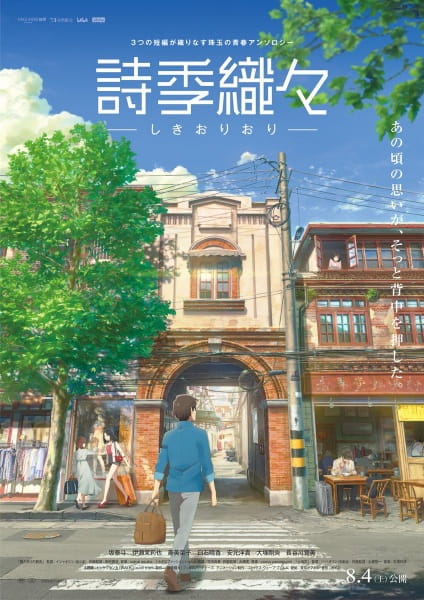
Flavors of Youth stands as a revolutionary force in animation through collaboration between Japan’s CoMix Wave Films (known for Makoto Shinkai works) and China’s Haoliners Animation League. This 2018 anthology film weaves three distinct vignettes that learn about nostalgia in different Chinese cities while featuring unmistakable Japanese animation esthetics.
“The Rice Noodles,” the first story, captures Xiao Ming’s memories of his grandmother’s noodle shop and shows how food creates bridges to our past. The segment’s detailed animation brings viewers so close to the experience that they can almost taste the noodles themselves.
“A Little Fashion Show” tells the story of fashion designer Yi Lin and her battle with aging in an industry fixated on youth. The segment offers a realistic look at the fashion world’s harsh nature while exploring deep sisterly connections, unlike typical anime portrayals.
“Love in Shanghai” brings viewers into Limo’s world as he finds cassette tapes with messages from his childhood crush Xiao Yu. The animation masterfully switches between sharp modern scenes and soft, hazy flashbacks that mirror memory’s fluid nature.
This Japanese animated film sets itself apart from other drama anime movies with its thoughtful pacing and blend of cultures. Flavors of Youth shows how urban life shapes our personal bonds, earning its place among the best drama anime with a unique Chinese-Japanese cooperative vision.
10. Only Yesterday (1991)
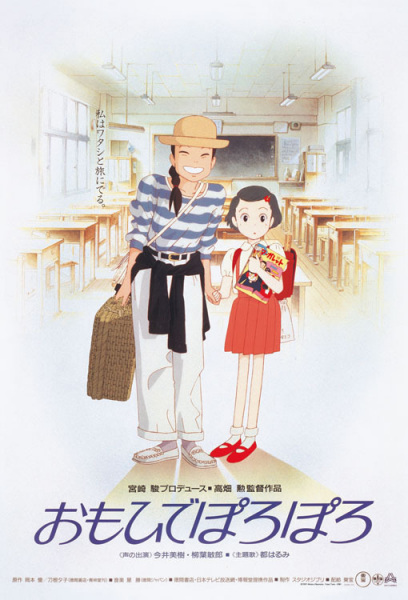
Isao Takahata’s contemplative masterpiece Only Yesterday examines adult nostalgia through a unique dual-timeline structure rarely seen in Japanese animated films. Studio Ghibli released this thoughtful drama in 1991. The story centers on Taeko Okajima, a 27-year-old office worker who takes a countryside vacation to harvest safflowers and finds herself facing memories of her 10-year-old self.
Throughout the narrative, Takahata skillfully moves between 1982 and 1966. He creates a difference between timelines through subtle color palettes. Childhood sequences shine with vibrant hues while adult scenes feature subdued tones. These visual elements complement Taeko’s emotional experience as she resolves her childhood dreams with her adult reality.
Among others, this anime drama movie stands out through its honest portrayal of female coming-of-age experiences rarely shown in animation. Taeko’s childhood memories capture universal growing pains with remarkable authenticity, from first menstruation to classroom embarrassments.
First and foremost, the film offers deep insights about life choices and personal fulfillment. Taeko develops feelings for organic farmer Toshio and questions if her Tokyo lifestyle represents the life she once imagined.
People call Only Yesterday one of Studio Ghibli’s most mature works. The film shows how the best drama anime movies can thoughtfully explore adult themes through japanese animation’s unique storytelling capabilities.
Conclusion
Japanese drama anime movies are exceptional examples of how animation can tell deep emotional stories. These ten masterpieces show the amazing range of storytelling in this medium. Orange: Mirai explores selfless sacrifice, while The Tale of Princess Kaguya creates breathtaking visual poetry. These films turn simple ideas into deeply moving stories that appeal to viewers everywhere.
These works stand out because they tackle complex themes without losing their artistic value. Colorful approaches suicide and depression through a supernatural lens. Maquia delves into the bittersweet nature of motherhood through an immortal’s life. Only Yesterday and Flavors of Youth use nostalgia as a powerful tool to tell their stories. They prove that animation is perfect for showing how memories feel.
The visual creativity in these films makes them special. Princess Kaguya’s watercolor-style art and To the Forest of Firefly Lights’ glowing imagery show how artistic choices make emotional stories stronger. These visual approaches help viewers feel abstract emotions in real ways.
These works mean much more than just entertainment. Ushiro no Shoumen Daare gives fresh views on historical events through a child’s eyes. The Anthem of the Heart shows how art can heal. These stories open windows into Japanese culture and speak to experiences we all share.
Watching these ten films helps you understand why Japanese drama anime fascinates audiences worldwide. These recommendations are just a small part of Japan’s rich animated storytelling tradition. They work great as starting points for newcomers and remain classics for longtime fans. You’ll find coming-of-age stories, historical views, and deep thoughts about life’s meaning. These masterpieces bring emotional depth and artistic excellence that go beyond cultural boundaries and show animation’s power as a storytelling medium.
